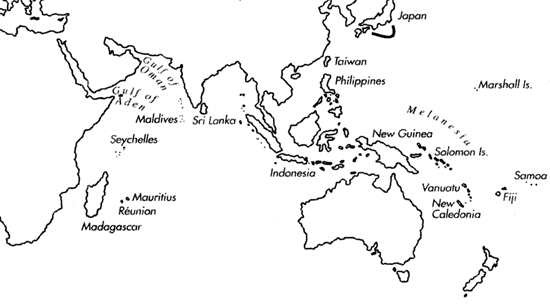Range: Sagami Bay, Japan.
Description: Small, light. Last whorl conical; outline slightly convex, left side concave near base. Shoulder angulate and weakly tuberculate. Spire of moderate height to high, outline slightly concave. Larval shell of about 1.75 whorls, maximum diameter about 0.9 mm. Postnuclear spire whorls tuberculate. Teleoconch sutural ramps flat, with 1-2 increasing to 4-6 spiral grooves. Last whorl with fine spiral ribs near base.
| Shell Morphometry | ||
|---|---|---|
| L | 14-19 mm | |
| RW | -0.05 g/mm | |
| RD | 0.56-0.67 | |
| PMD | 0.85-0.88 | |
| RSH | 0.15-0.27 | |
Ground colour light brown. Last whorl with yellowish brown blotches, irregularly arranged or tending to form 2 interrupted spiral bands; usually also with spiral rows of brown dots or dashes. Spire matches pattern of last whorl. Aperture white.
Radular teeth 0.7 mm long, with 3 barbs adapically approximately 120° apart; no serration or cusp (Taki, 1937).
Habitat and Habits: In 43-300 m, on sandy bottom (Taki, 1937).
Discussion: C. tuberculosus has no close similarities to known species; superficially it resembles C. acutangulus in size and sculpture, but differs in its pattern, smooth last whorl and paucispiral larval shell. Juveniles of C. sieboldii differ in the absence of spiral grooves and carinate early teleoconch whorls. C. tuberculosus was described originally as a fossil species, but in 1935 live specimens were collected from Sagami Bay (Taki, 1937). It is one of the few recent species originally described as a fossil.

C. tuberculosus range map
This section contains verbatim reproductions of the accounts of 316 species of Conus from the Indo-Pacific region, from Manual of the Living Conidae, by Röckel, Korn and Kohn (1995). They are reproduced with the kind permission of the present publisher, Conchbooks.
All plates and figures referred to in the text are also in Röckel, Korn & Kohn, 1995. Manual of the Living Conidae Vol. 1: Indo-Pacific Region.
The range maps have been modified so that each species account has it own map, rather than one map that showed the ranges of several species in the original work. This was necessary because each species account is on a separate page on the website and not confined to the order of accounts in the book.